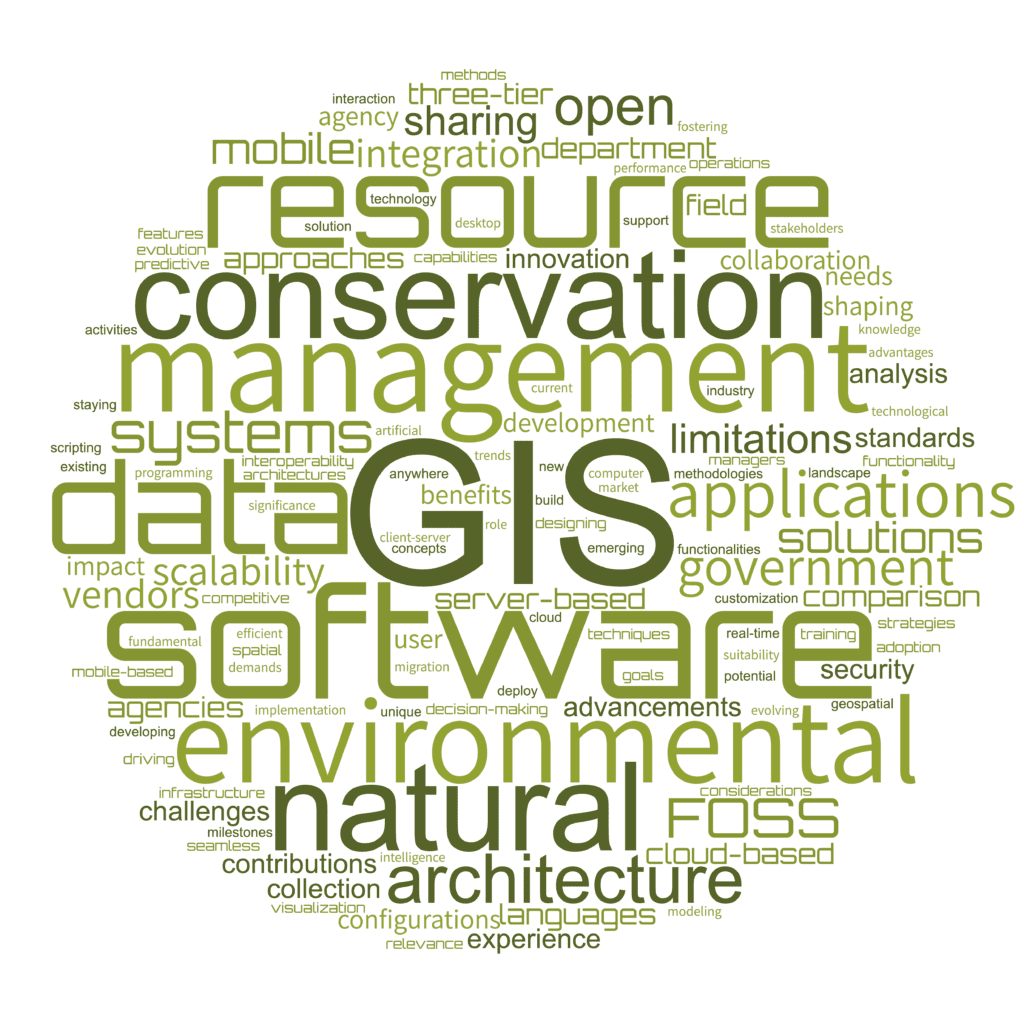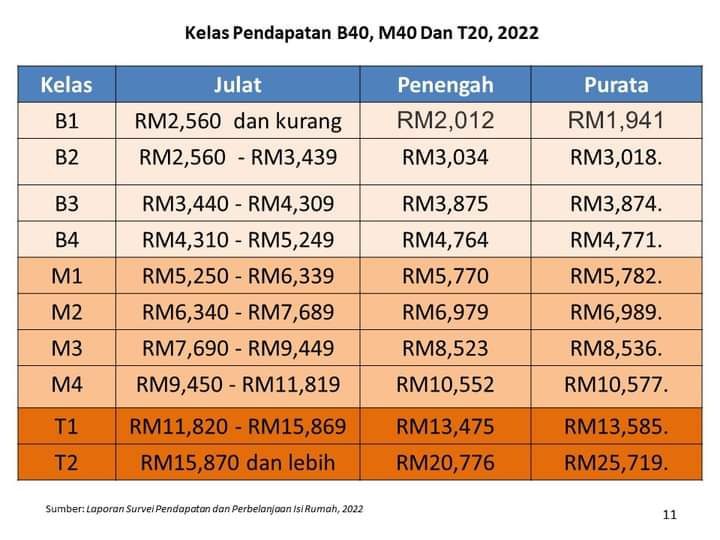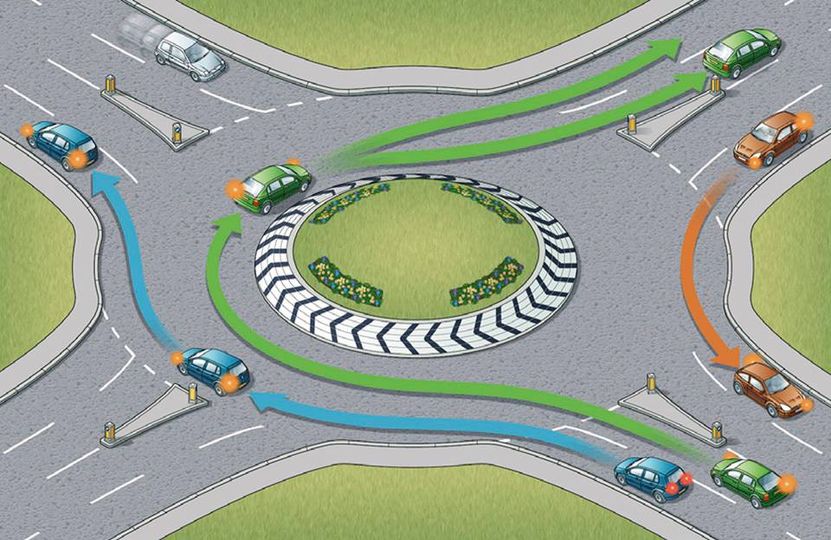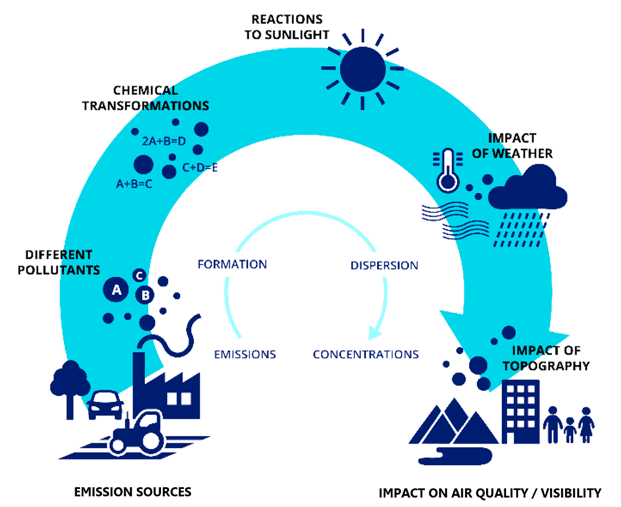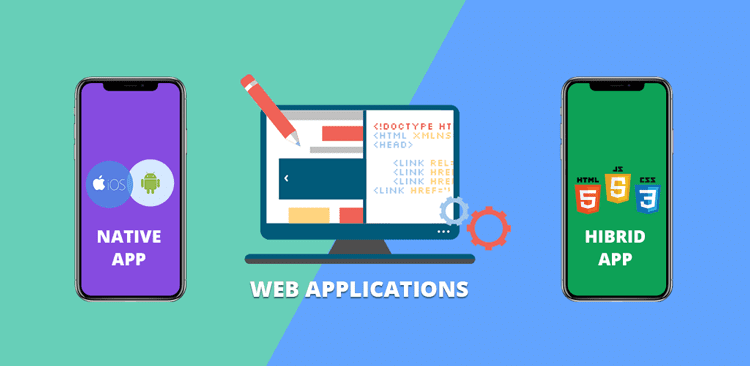By Shahabuddin Amerudin
Abstract
This paper explores the benefits, limitations, and challenges associated with Free and Open-Source Software (FOSS) in Geographic Information Systems (GIS) applications for government agencies engaged in environmental conservation and natural resource management. FOSS offers the potential for cost-effective, customizable solutions that align with the principles of open data and open standards, promoting interoperability and collaboration. However, adoption, implementation, training, support, data migration, and integration pose significant challenges that agencies must carefully consider. Understanding the role of FOSS in GIS can help government agencies leverage its advantages while mitigating potential pitfalls.
1. Introduction
Geographic Information Systems (GIS) play a pivotal role in government agencies involved in environmental conservation and natural resource management. In recent years, Free and Open-Source Software (FOSS) has gained prominence as an alternative to proprietary GIS solutions. This paper examines the benefits and limitations of FOSS in GIS applications, emphasizing its potential contributions to government agencies in these domains. Additionally, it explores the significance of open data and open standards in GIS software systems and addresses the challenges and considerations associated with FOSS GIS software adoption.
2. Benefits and Limitations of FOSS in GIS Applications
Government agencies engaged in environmental conservation and natural resource management face unique challenges and opportunities in the realm of Geographic Information Systems (GIS). Leveraging Free and Open-Source Software (FOSS) within GIS applications can have profound implications for these agencies. In this section, we delve further into the benefits and potential contributions of FOSS, while also addressing its limitations.
2.1 Benefits of FOSS
2.1.1 Cost-Effective Solutions
One of the most compelling advantages of FOSS in GIS applications is its cost-effectiveness. In an era where budget constraints are a constant concern for government agencies, FOSS provides a viable alternative to expensive proprietary GIS software (Lemmens et al., 2019). FOSS solutions are often available at no licensing cost, allowing agencies to allocate their financial resources more efficiently. This cost savings can be redirected towards other critical aspects of environmental conservation and natural resource management, such as fieldwork, data collection, and research initiatives.
Furthermore, FOSS eliminates the need for costly licensing agreements and subscriptions, making it an attractive option for agencies with limited budgets. These savings can be particularly impactful for smaller organizations and those working in developing regions where financial resources are scarce.
2.1.2 Customization
The adaptability and customization capabilities of FOSS GIS applications are instrumental in addressing the unique requirements of government agencies involved in environmental conservation and natural resource management (Senaratne et al., 2017). FOSS solutions offer a level of flexibility that proprietary software often struggles to match. This flexibility extends to both the user interface and the underlying codebase.
Government agencies can tailor FOSS GIS applications to align seamlessly with their specific needs and workflows. This customization allows agencies to create specialized tools, datasets, and analysis processes that are precisely tailored to their environmental goals. Customization fosters efficiency by eliminating unnecessary features and streamlining workflows, enabling agencies to focus on their core objectives.
2.1.3 Potential Contributions to Environmental Conservation
FOSS goes beyond cost savings and customization—it embodies a collaborative ethos that encourages knowledge sharing and innovation. This collaborative spirit is particularly relevant to environmental conservation efforts (Peterson, 2018). FOSS communities consist of developers, researchers, and practitioners from diverse backgrounds who work together to create and improve GIS tools.
The open nature of FOSS encourages agencies to share data, tools, and best practices openly with the global GIS community. This sharing of knowledge facilitates the development of innovative tools and solutions for environmental conservation. For example, FOSS GIS communities often contribute to the creation of open-access environmental datasets, fostering a global repository of information that can aid in conservation efforts worldwide.
3. Open Data and Open Standards in GIS Software Systems
Open data and open standards are pivotal components of GIS software systems that have far-reaching implications for government agencies involved in environmental conservation and natural resource management. This section extends the discussion on the significance and advantages of open data and open standards in GIS applications.
3.1 Open Data
3.1.1 Promoting Transparency
Open data initiatives within GIS software systems contribute significantly to promoting transparency in government agencies (Goodchild & Li, 2012). Transparency is a cornerstone of modern governance, allowing the public, stakeholders, and researchers to access and scrutinize spatial information and related datasets. By making spatial data openly accessible, government agencies demonstrate accountability and facilitate informed decision-making.
In the context of environmental conservation and natural resource management, open data initiatives ensure that critical information about ecosystems, resources, and conservation efforts is readily available to all interested parties. Transparency in data sharing fosters trust among stakeholders, ultimately leading to more effective environmental policies and resource management strategies.
3.1.2 Collaboration
Open data initiatives go beyond transparency—they foster collaboration among government agencies, research institutions, and the public (Budhathoki et al., 2008). Collaborative efforts are essential in tackling complex environmental challenges that require multidisciplinary expertise and diverse perspectives.
Government agencies engaged in environmental conservation and natural resource management can leverage open data to engage with stakeholders and harness external expertise. Researchers and non-governmental organizations can access government datasets to conduct independent studies and develop innovative solutions. The public can actively participate in environmental monitoring and protection efforts, providing valuable data and insights.
Open data initiatives promote a sense of shared responsibility for environmental conservation and resource management. Collaborative data sharing allows agencies to tap into a collective pool of knowledge and resources, leading to more informed decisions and effective actions.
3.2 Open Standards
3.2.1 Interoperability
Open standards are the linchpin of interoperability within GIS software systems (Van de Walle et al., 2011). Interoperability refers to the ability of different software applications, including FOSS solutions, to seamlessly exchange data and work together. It ensures that data produced and consumed by various GIS systems can be shared without barriers, facilitating efficient communication between agencies, organizations, and platforms.
In the realm of environmental conservation and natural resource management, interoperability is critical. Government agencies often collaborate with multiple stakeholders, each using different GIS tools and platforms. Open standards enable data to flow smoothly between these systems, eliminating data silos and inefficiencies. For example, environmental data collected by field personnel using one GIS application can be easily integrated with data from other sources, enabling comprehensive analyses and informed decision-making.
3.2.2 Customization
Open standards also empower government agencies to customize GIS solutions to align with their specific goals and requirements (Van de Walle et al., 2011). Customization ensures that GIS software systems can be tailored to address the unique challenges and objectives associated with environmental conservation and resource management.
Agencies can modify open standard-based GIS applications to accommodate their workflows, data schemas, and analysis methods. This flexibility allows for the integration of specialized tools, the creation of custom datasets, and the adaptation of software interfaces to match agency-specific terminology and processes. Customization enhances efficiency by ensuring that GIS applications align seamlessly with an agency’s mission and objectives.
4. Challenges and Considerations of FOSS GIS Software
The adoption of FOSS in GIS presents numerous advantages, as discussed earlier in this paper. However, it is essential to recognize that this transition is not without its challenges and considerations. Government agencies involved in environmental conservation and natural resource management must address these challenges effectively to maximize the benefits of FOSS GIS software.
4.1 Adoption and Implementation
4.1.1 Resistance to Change
One of the primary challenges faced by government agencies is the resistance to change when transitioning from proprietary GIS solutions to FOSS alternatives (Dörner et al., 2019). Employees and stakeholders within agencies may be accustomed to using familiar proprietary software, making them hesitant to embrace FOSS GIS solutions. This resistance can stem from concerns about the learning curve, potential disruptions to workflows, and perceived risks associated with FOSS.
To overcome resistance to change, agencies should emphasize the advantages and benefits of FOSS GIS software, including cost savings, customization, and potential contributions to environmental conservation. Proper communication and change management strategies are essential to help employees and stakeholders understand the rationale behind the transition and address their concerns.
4.1.2 Specialized Expertise
Implementing FOSS GIS software often necessitates specialized expertise in open-source technologies and GIS (Foerster et al., 2019). Government agencies may lack in-house knowledge and skills to effectively deploy FOSS solutions. Acquiring or hiring personnel with expertise in FOSS GIS is essential for successful implementation.
To address this challenge, agencies can invest in training programs to upskill their existing staff or hire individuals with the required expertise. Collaborating with external consultants or engaging with the FOSS community can also provide valuable guidance and support during the implementation process. Recognizing the importance of specialized expertise is crucial to avoid potential roadblocks in adopting FOSS GIS software.
4.2 Training and Support
4.2.1 Staff Training
Effective utilization of FOSS GIS software requires thorough staff training (Peterson, 2018). Government agencies must invest in training programs to ensure that their employees can navigate and make the most of the new software tools. Training should encompass both basic and advanced functionalities of FOSS GIS applications and may involve learning new workflows and processes.
Training programs should be tailored to the specific needs of agency staff, taking into account their roles and responsibilities in environmental conservation and natural resource management. A well-trained workforce is essential for maximizing the potential of FOSS GIS solutions and achieving the desired outcomes.
4.2.2 Support and Maintenance
Agencies may face challenges in accessing reliable support and maintenance services for FOSS GIS applications (Senaratne et al., 2017). Unlike proprietary software, which often comes with dedicated customer support, FOSS relies on community-driven support mechanisms. While FOSS communities can be highly responsive, agencies may require more structured and dependable support arrangements.
To address this challenge, government agencies can consider contracting with third-party vendors or consultants who specialize in FOSS GIS support and maintenance. These vendors can provide the necessary expertise and responsiveness to ensure the continued functionality and reliability of FOSS GIS applications.
4.3 Data Migration and Integration
4.3.1 Data Migration
Migrating existing GIS data and workflows to FOSS GIS software can be a complex and resource-intensive process (Lemmens et al., 2019). Agencies may encounter compatibility issues, data format challenges, and data quality concerns during migration. Data migration requires careful planning, testing, and validation to ensure the integrity and accuracy of transferred data.
To overcome data migration challenges, agencies should conduct thorough data assessments, identify potential issues, and develop comprehensive migration strategies. Collaboration with experts in data migration and FOSS GIS can help agencies navigate this transition effectively.
4.3.2 Integration with Existing GIS Infrastructure
Integrating FOSS GIS solutions with existing infrastructure and workflows may require careful planning and adjustments (Dörner et al., 2019). Government agencies may have established GIS systems, databases, and processes that need to seamlessly coexist with FOSS applications.
Successful integration involves mapping existing workflows to FOSS GIS solutions, ensuring data compatibility, and configuring interfaces for smooth data exchange. Agencies should allocate time and resources for thorough testing and validation to identify and resolve any integration issues.
5. Conclusion
Free and Open-Source Software (FOSS) holds great potential for government agencies engaged in environmental conservation and natural resource management by offering cost-effective, customizable solutions. Embracing open data and open standards within GIS software systems enhances transparency and collaboration. However, agencies must navigate adoption challenges, invest in training and support, and address data migration and integration complexities. By understanding the role of FOSS in GIS and carefully considering these challenges, government agencies can harness its advantages while effectively advancing their missions in environmental conservation and natural resource management.
References
- Budhathoki, N. R., Nedovic-Budic, Z., & Aanestad, M. (2008). Reconceptualizing the role of the user of spatial data infrastructure. GeoJournal, 72(3-4), 149-160.
- Dörner, J., Musil, T., Wagner, A., & Schmid, K. (2019). Barriers for the Adoption of Free and Open Source Geographic Information System (FOSS GIS) in the Local Public Administrations of Germany. ISPRS International Journal of Geo-Information, 8(12), 540.
- Foerster, T., Claramunt, C., Gould, M., Ray, C., & Ware, J. (2019). Bridging the Digital Divide: Reconciling Traditional and Formal Use of Geospatial Information. ISPRS International Journal of Geo-Information, 8(6), 285.
- Goodchild, M. F., & Li, L. (2012). Assuring the quality of volunteered geographic information. Spatial Statistics, 1, 110-120.
- Lemmens, R., Crompvoets, J., Milis, K., & Vancauwenberghe, G. (2019). Implementing Free and Open Source Software in the Flemish Government: A Sociotechnical Analysis. ISPRS International Journal of Geo-Information, 8(2), 64.
- Peterson, M. P. (2018). Geospatial information in the wild: Open data and citizen science in Redwood National and State Parks. GeoJournal, 83(2), 211-227.
- Senaratne, H., Mobasheri, A., Ali, A. L., Capineri, C., & Haklay, M. (2017). A review of volunteered geographic information quality assessment methods. International Journal of Geographical Information Science, 31(1), 139-167.
- Van de Walle, B., Crompvoets, J., & Doherty, P. (2011). Implementing SDI: A Theoretical-Empirical Framework for Assessing the Impact on Spatial Data Infrastructures. ISPRS International Journal of Geo-Information, 1(1), 32-45.
Suggestion for Citation:
Amerudin, S. (2023). The Role of FOSS in Advancing GIS for Government Agencies in Environmental Conservation and Natural Resource Management. [Online] Available at: https://people.utm.my/shahabuddin/?p=6875 (Accessed: 2 September 2023).






